The last 150 years have been a busy time for those selling treatments to cure hair loss, dandruff and afflictions of the scalp. Maisie Jenkins unearths the mysterious devices and potions advertised by unscrupulous manufacturers exploiting our longing for luscious locks.
Historical ways to hang on to your hair
Words by Maisie Jenkins
- In pictures
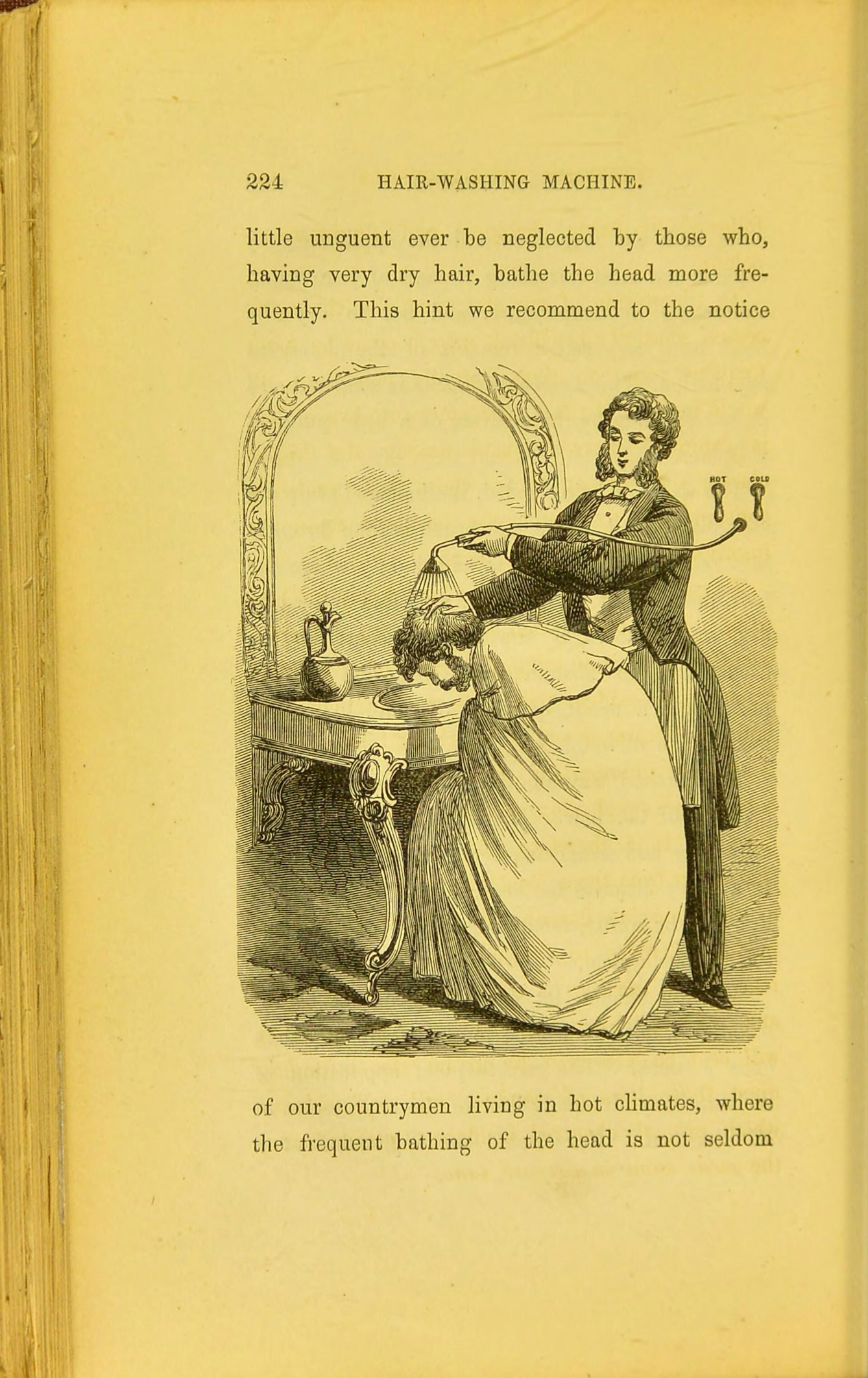
Growing up, I used to wash my hair every day, loving the feeling of softness from my conditioner. I will never forget the horror on some of my friends’ faces when they found out this fact – reminding me I was ruining my hair and stripping all the natural oils from it. One of the early writers on baldness and alopecia, H P Truefitt, would have agreed with them, but for a different reason. His treatment in the 1860s for incipient baldness was to wash hair only once a week, identifying frequent shampooing as the cause of hair loss among the upper classes.
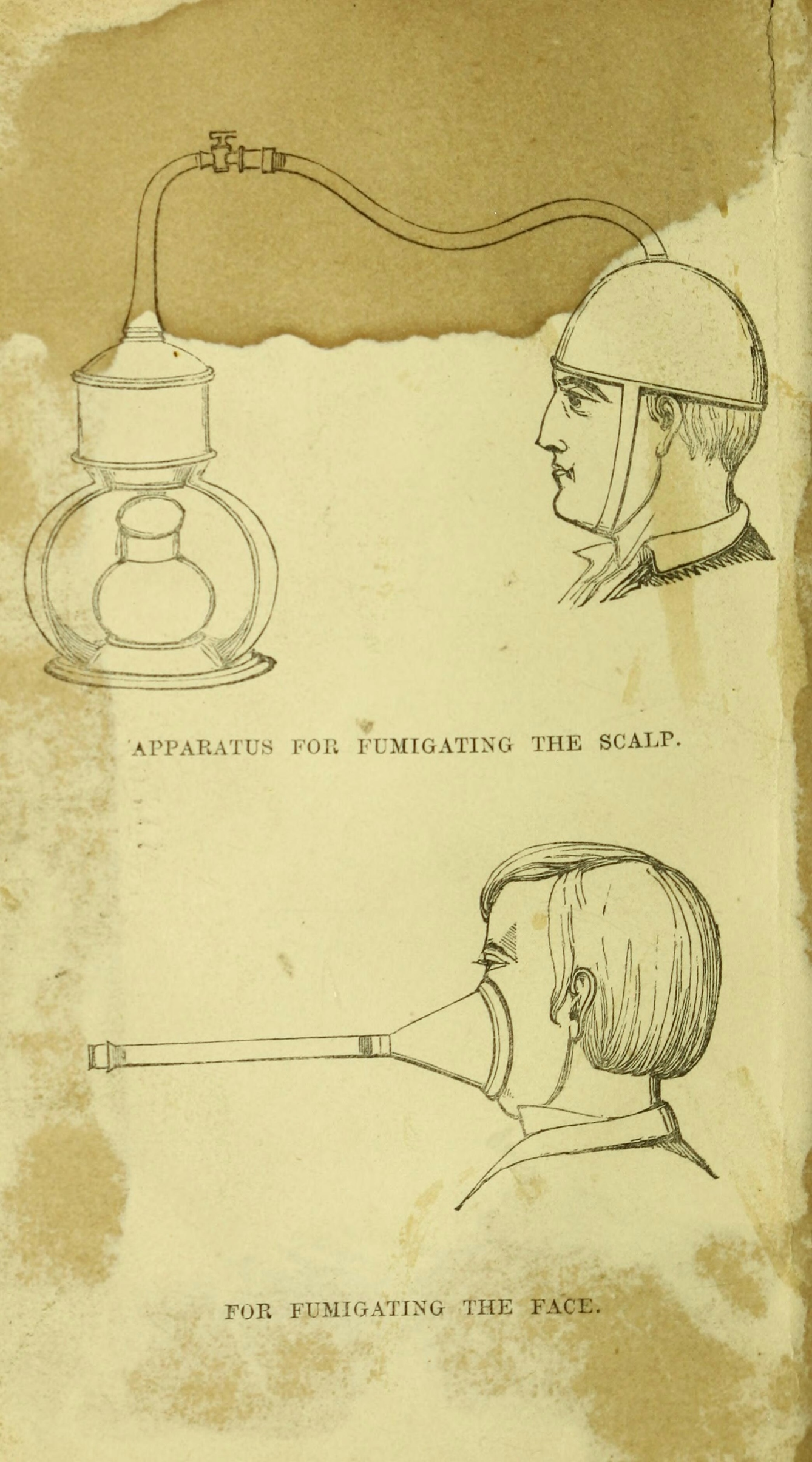
Truefitt argued that maintaining a full head of hair is fundamental to our sense of identity and wellbeing. Other, possibly more effective treatments for hair loss from a similar time period include fumigation. This particular fumigator was used to treat various scalp diseases that cause baldness, pumping chemicals such as iodine, sulphur and mercury in an attempt to purify the scalp and stimulate growth. Iodine and sulphur are still ingredients of hair-loss treatments today, whereas mercury vapour has long been deemed toxic and dangerous to humans.
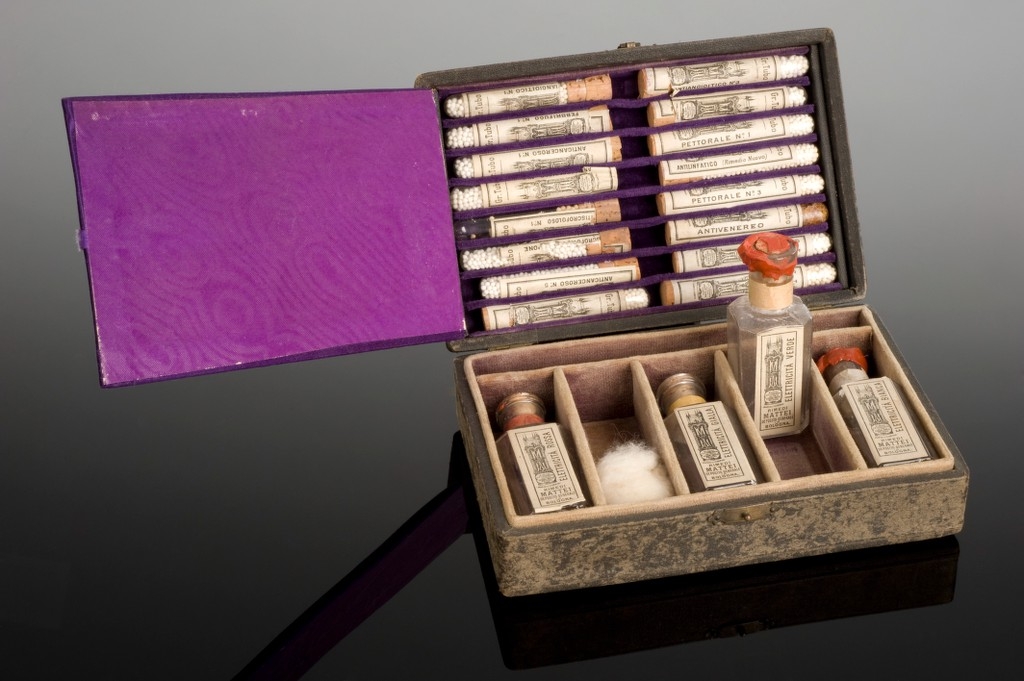
Some more unusual treatments also sprung up around this time. Cesare Mattei, an Italian count interested in homeopathy, believed that fermented plants gave off ‘electrical’ energy that could be used to cure illnesses. The vial labelled ‘Canceroso 5’ contained a multitude of secret ingredients and could be used to treat baldness. Mattei’s system was popular in the 1880s, but by the 1930s these ideas about homeopathy had been relegated to the fringes of healthcare.
![Two illustrations of Dr Lichtmann's caps for promoting hair growth, labelled Fig. 1 and Fig. 2. Accompanying text reads '[This drawing is a full-size reproduction of the Original]'.](https://images.prismic.io/wellcomecollection/d401430d-4271-49a2-919b-761cccd2ad49_image+4.jpg?w=1338&auto=compress%2Cformat&rect=&q=100)
The importance of holding on to our hair still remained some decades after Truefitt. By 1904 treatments to slow or prevent baldness were still being invented. This hair cap to be used when sleeping was constructed in two to three layers. The outer layer was used for protection, then the second layer was moistened before sleeping with a mixture of various ingredients including water, alcohol and glycerine, to help stimulate blood flow through the scalp to feed the hair roots.
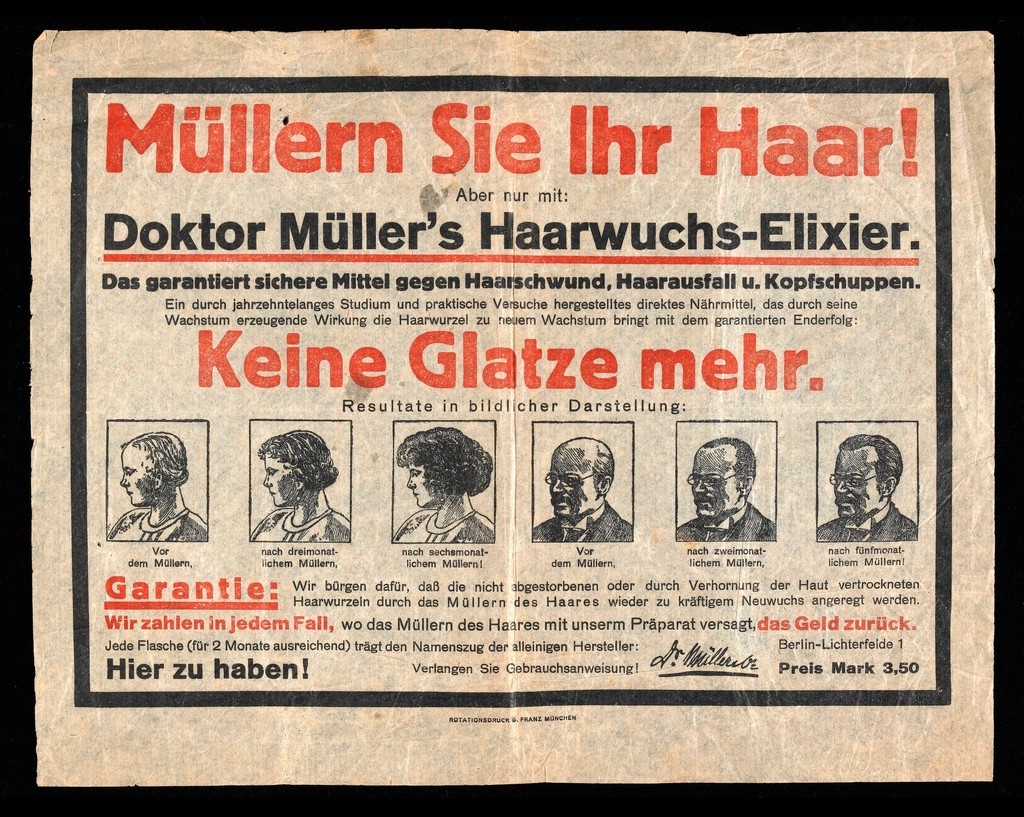
The appeal of a full head of hair has not been limited to the UK, either. This German advertisement for Doktor Müller's Haarwuchs-Elixier from the early 1910s guarantees a safe and tested remedy for hair loss, or even just extra growth for thicker hair, as pictured. Treatments for hair loss have come long way from simply washing one’s hair less frequently, but the importance of keeping your hair plentiful still stands.
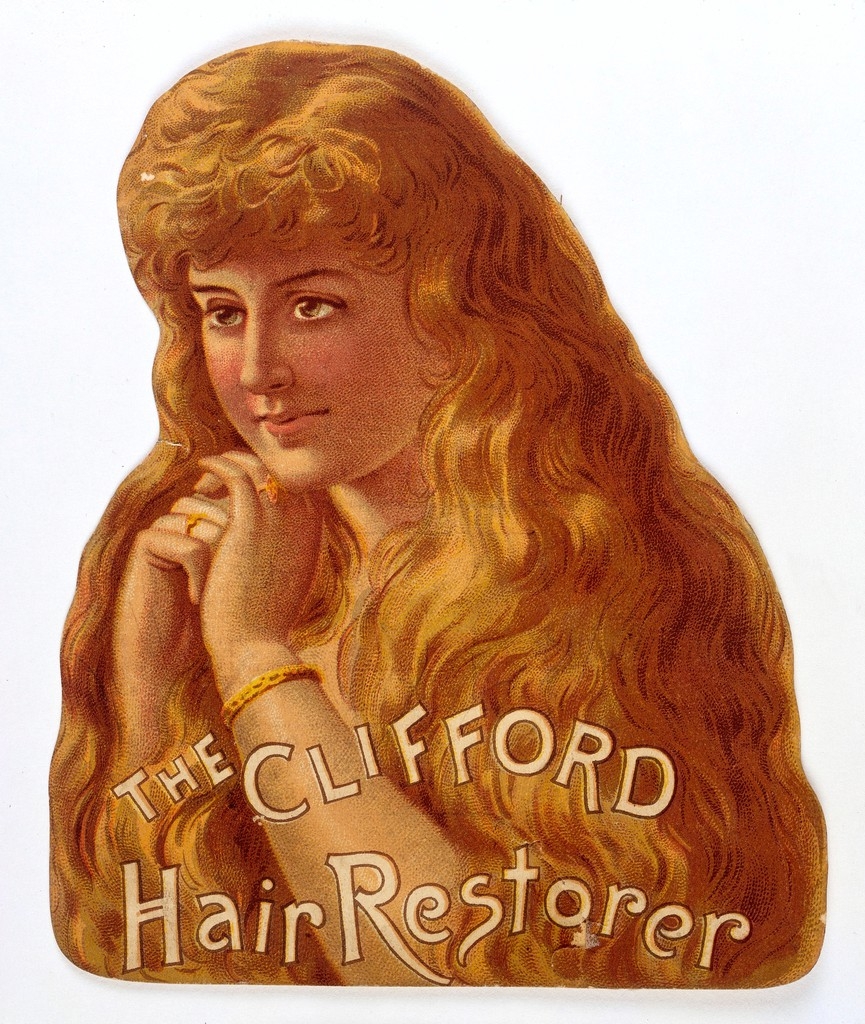
Also on sale in the 1880s was Clifford Hair Restorer, which aimed to restore natural hair colour, stop hair falling out and remove dandruff. As with so many hair treatments that can still be seen today, the appeal to the customer comes from their desire to have the long and full locks pictured, rather than helping them understand how the treatment works.
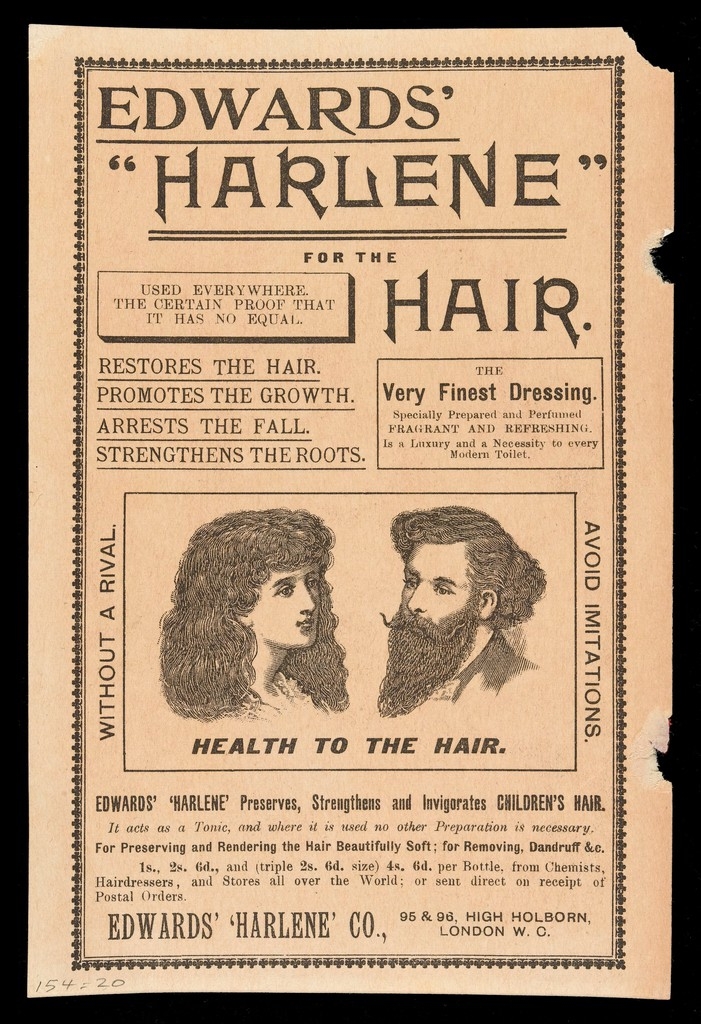
This appeal of thick and healthy-looking hair is not exclusive to women. Edwards’ ‘“Harlene” for the hair’ was a shampoo aimed at both men and women, promising soft and silky hair. Treatments such as this show it’s not enough to simply keep your hair: it has to also be lengthy and free from dandruff. Perhaps these advertisements fed our reliance on products to ‘cure’ the perceived imperfection of dandruff, a trend that’s still alive and kicking today.
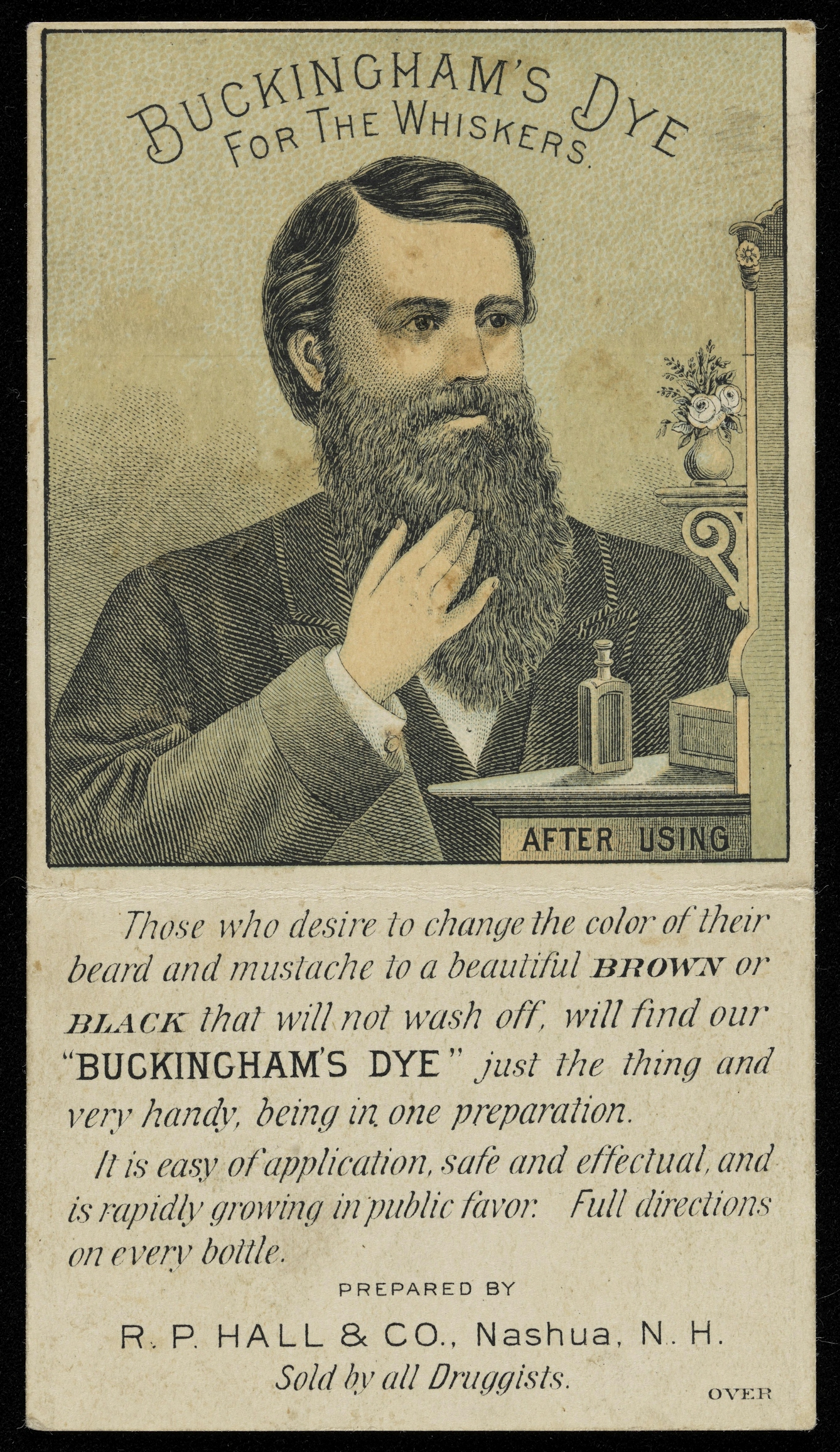
Quantity and consistency of hair is not the only key; natural colours and “no greys” also play a part. I will never forget squeezing lemon on my hair in the summer to lighten it, only to be followed by a trail of wasps. Hopefully this beard dye circulating around 1890 was more successful, claiming to turn any greys into a “beautiful brown or black” colour.
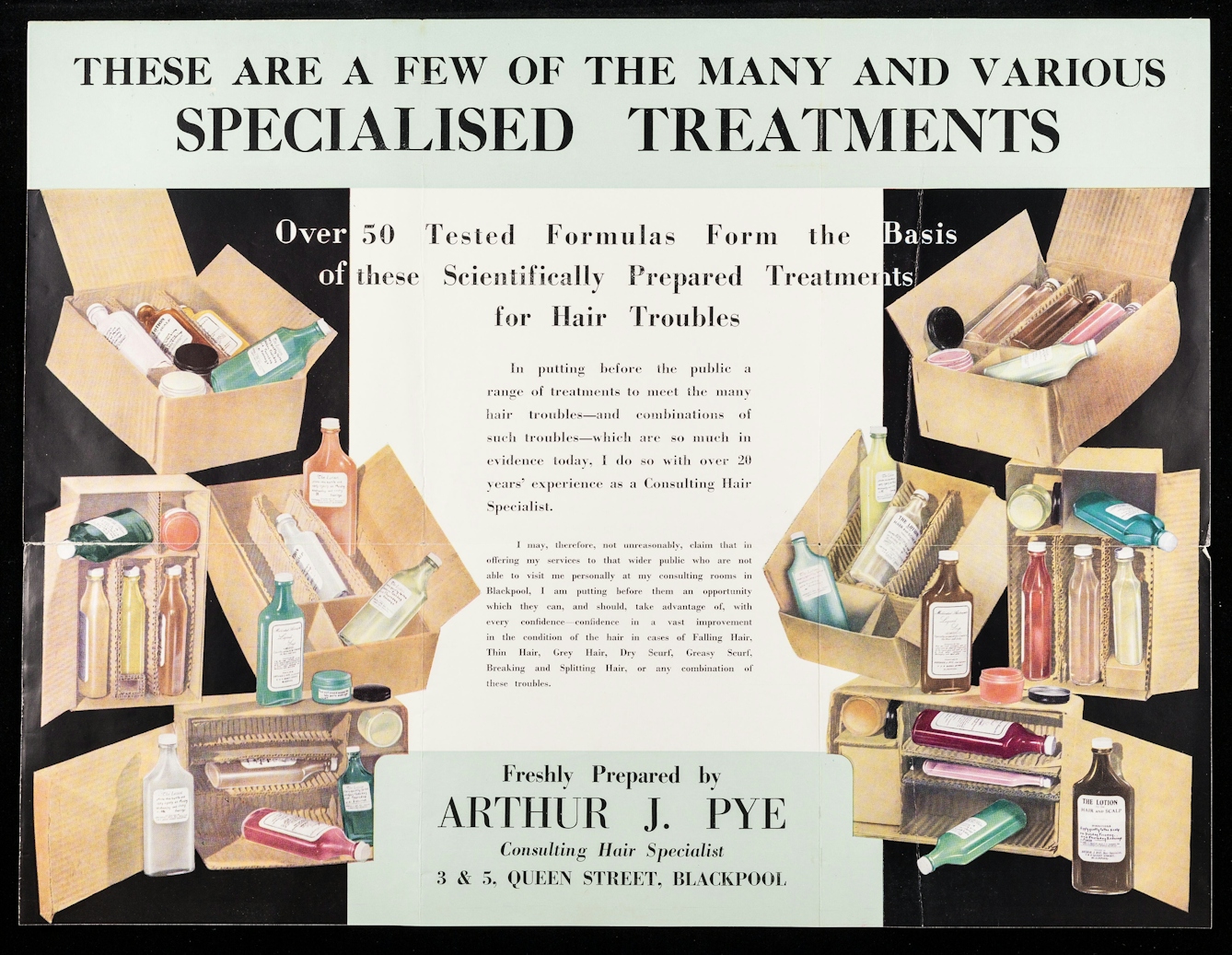
Many of the hair treatments mentioned remained mysterious in their ingredients, or claimed to fix a multitude of hair conditions in one go. Maybe this advertisement from Arthur J Pye is more reassuring. Boasting of 20 years of experience, Pye says his range of treatments can solve a variety of conditions, such as thin hair, grey hair and splitting hair. After all, if our hair is so important to us, why should we simply trust a picture of someone with beautiful hair over the words of an expert?
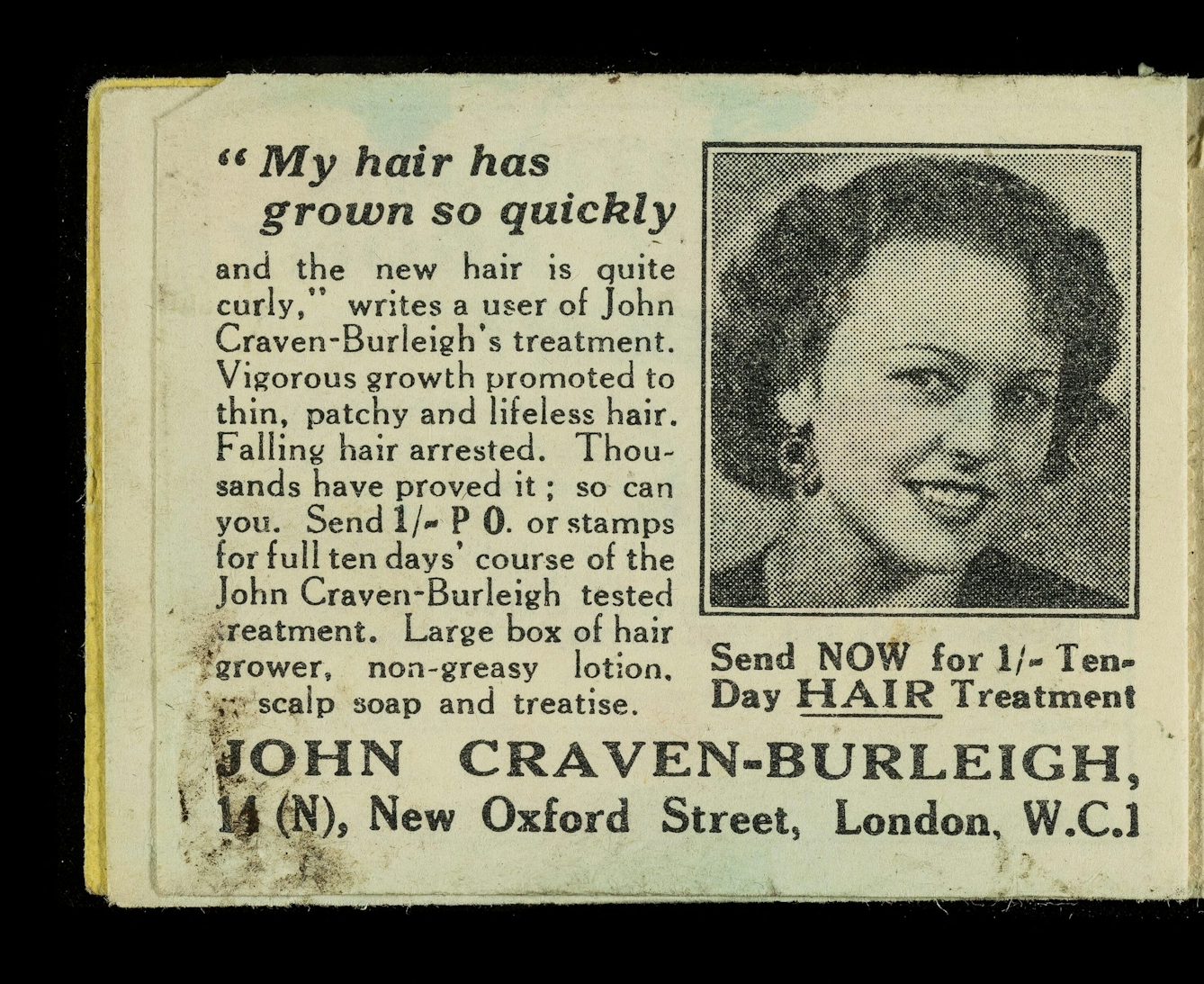
Nowadays, hair treatments include anything from argan oil to keratin smoothing products, or even hair-transplant surgery. It’s not hard to see how our desire for full, silky, dandruff-free, perfectly coloured hair has remained pervasive after so many different treatments over the past 200 years. Perhaps Truefitt is still right: our hair is one of the most important aspects of our identity, and that’s why we put so much time and effort into it.
About the author
Maisie Jenkins
Maisie is a graduate trainee at Wellcome. Prior to joining Wellcome, she studied Politics at the London School of Economics and worked at NHS Providers.
